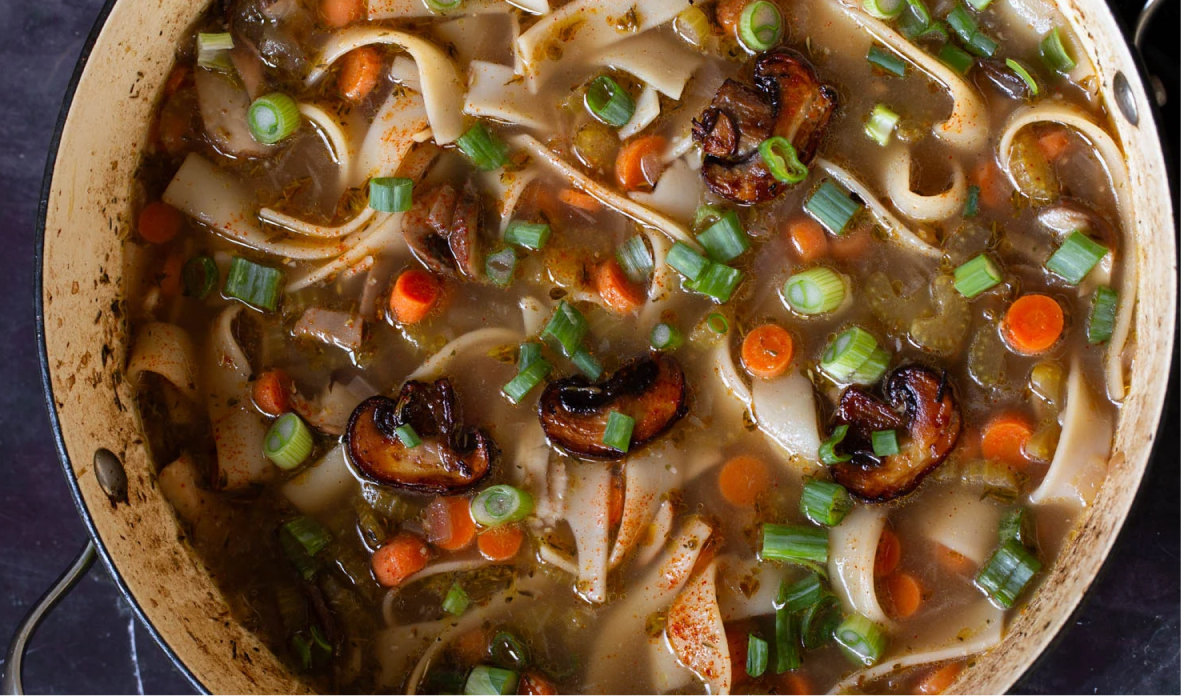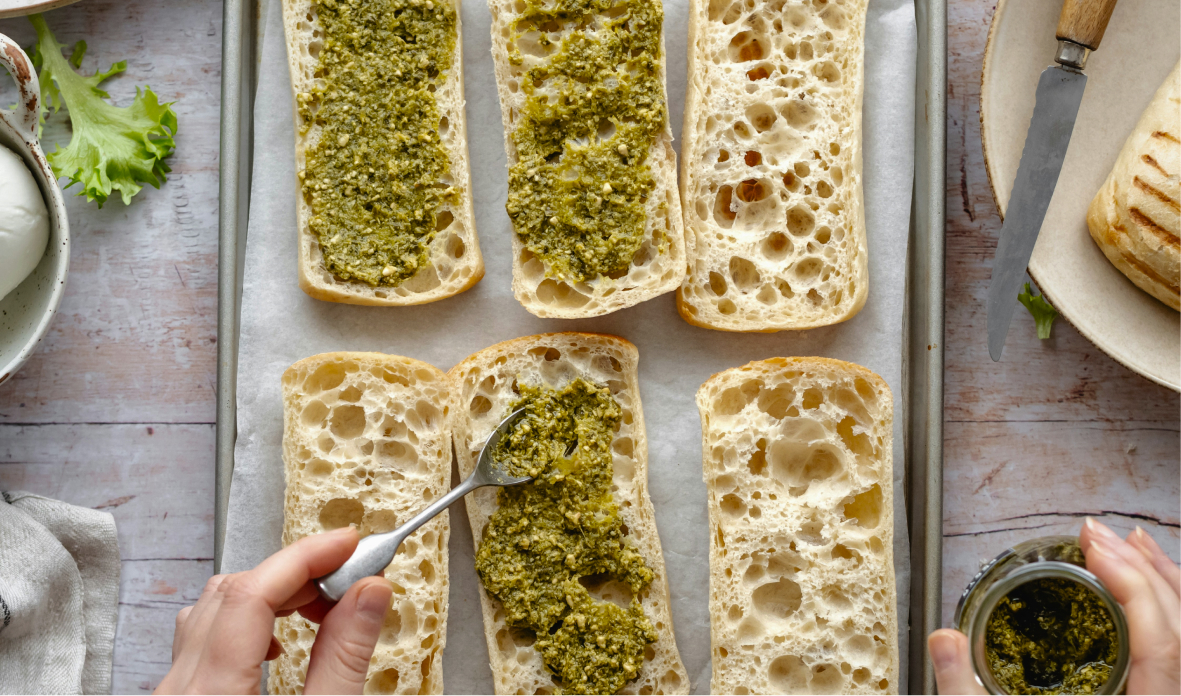Commons' Guide to Composting
.avif)
Join the community





Worldwide, we waste nearly one third of the food we produce. That’s enough to feed two billion people, more than double the amount of undernourished people on the planet. The United States wastes more food than any other country. Some food this waste happens upstream on the farm, in processing, or in transit — but nearly a quarter of it happens in our kitchens.
Research suggests the average American wastes about a pound of food each day. For comparison, folks in sub-Saharan Africa and South Asia only toss around 10 pounds in an entire year. That's 36x less! Solving our food waste crisis would not only alleviate global hunger, it would alleviate the climate crisis.
- Wasting less food
- Composting the rest
- What to compost
- Municipal pick-up services
- Private pick-up services
- Drop-off options
- Composting at home, outdoors
- Composting at home, indoors
Wasting Less
Composting your food waste is the second best thing you can do with it. The best thing you can do is avoid food waste altogether.
Everyone on the planet suffers from the climate impact of our food waste, even if they contribute very little to the problem. Here’s how people living in richer nations can play their part in the solution:
- Shop smart: Only buy what you know you’ll eat. Buy ripe produce to eat now, and not-quite-ripe produce to eat later.
- Eat perishables first: After you shop, prioritize meals with the most perishable ingredients. Save shelf-stable dinners for later.
- Store food effectively: Know the best storage methods for different foods to keep them fresh and tasty longer.
- Eat ugly food: The US tosses around 20% of produce because it doesn’t meet cosmetics standards. Companies like Imperfect Foods rescue that food and deliver it to your door.
- Understand food dates: Dates on your food (like "best by" or "sell by") indicate peak quality, not safety. You can still eat food after the listed date if it doesn’t show signs of spoilage.
- Use food scraps: Get creative with leftover bits and pieces. Sauté veggie leaves and stems, make bone broth or vegetable stock, or use citrus peels as air freshener.
Composting the rest
When food goes to landfills, it does not compost. Instead, it slowly rots and releases methane, a heat-trapping greenhouse gas with over 25 times the warming power of carbon dioxide.
The UN declared that slashing methane emissions is a top climate priority for the next decade. When we divert organic waste from landfills, we can cut 17-18% of preventable landfill emissions. Not only that, using compost enriches soil, helping it to absorb more nutrients, water, and even sequester carbon.
What to compost
Compostable matter is broken down into two categories:
- Greens are nitrogen rich. Most of your food scraps will fall into this category.
- Browns are carbon rich. Think paper products (paper towels, newspaper, egg cartons, etc) and dead plant trimmings.
All organic matter — from berries to bones — can compost in the right environment, but some materials require more time and/or the high heats of industrial compost setups. Reference the list below to see what can be composted and where.

Quick tip: The compostable plastic green bags that come with some countertop bins may not be accepted by many compost programs.
One of the main reasons is that compostable plastics take longer than food scraps to decompose. Also, many compostable plastics on the market are poorly regulated, so it's difficult to for composters to standardize and sort for the types they can accept.
Collecting your scraps
Collecting food scraps is the first step to composting them. Whether you're composting at home, or with a pick-up/drop-off, there are a few methods to collect your scraps:
Countertop container: Keeping a small compost collection container on your counter is a great way to get in the habit.
If you're emptying your counter bin every couple days, you can probably use any bowl or bin with a lid. If you're emptying your bin once a week (or less often), you may want to get one with an airtight seal and charcoal filter to prevent smell.
Freezer container: Collecting scraps in your freezer stops any smell before it starts and prevents your scraps from getting soggy. Any bag, bowl, or bin will do. You can also move scraps from your counter bin into the freezer.
Add it right to your pile: If you have a compost setup within tossing range of a kitchen window, you can add your scraps right to the pile.
.jpeg)
Options for Compost Collection and Drop-Off
There are home composting options for any living situation, but if you don’t want to compost at home, you still have options. Over a quarter of the US population has access to a composting program. These programs include curbside collection and drop-off sites run by the city, a private company, or a local organization.
Municipal Pick-up Services
Composting curbside is the lowest touch way to divert your food waste from landfills. It's not widely available in the US yet, but 7% of the largest US cities offer curbside collection. Reference the Litterless database to find options in your area.
If you live in an apartment or condo, your building may already participate in a curbside pickup program, or compost on-site. Ask your landlord or building manager about your options. If your complex doesn’t have any options, connect with your neighbors to lobby for a compost option.
Private Pick-up Services
If you don’t have a municipal option, there are hundreds of local businesses or organizations that offer composting services throughout the US, particularly in urban areas.
A few popular providers include CompostableLA in Los Angeles, Block Bins in Chicago, and Bootstrap in several East Coast states. To find more options, explore CompostNow’s directory of compost pick-up services in the US and Canada, or the Litterless database of private and public composting (curbside and drop-off).
Some of these services even offer bundled pickups for multi-unit buildings.
Drop-off Sites
Dropoff sites may be run by the city, a private company, or local organization. You can find options near you in the Litterless database.
Another great drop-off option is to compost through local community gardens. Community gardens are happy to have more food scraps for their compost piles. Often, gardens will have weekly hours when they're open for compost drop-offs. Search online for a community garden near you, and check to see what days they're open.
Finally, Sharewaste is a resource for finding folks in your area who are collecting food scraps for their home compost. The Sharewaste map spans the globe with options from Sydney to San Diego. Check their map to see if there's a composting neighbor near you.
.jpeg)
Options for home composting
Composting at home is great if there's no composting program in your area, or if you want to directly reap the rewards of creating your own plant nutrients. There are home composting options for every type of residence and lifestyle.
Composting requires a certain balance of greens, browns, moisture, and (in most cases) oxygen — but there's plenty of room for error. You don't need to overthink it, especially when you're just starting out.
Here are some rules of thumb to get you started:
- For every bucket of food scraps (greens) you add, try to add two buckets of browns. (Reference the chart above.)
- The smaller you can cut/rip up your scraps, the faster they'll compost.
- Your compost shouldn't stink, but if it does, it may be too wet. Try adding more browns. If it's dry, add some water.
- Turn your pile once a week or so to give it oxygen and mix your scraps.
- In a few weeks, you should start getting beautiful compost (aka humus). Use a sifter to separate the compost from the scraps that are still breaking down.
- Add compost into your plants' soil, and watch them flourish!
“If you read online about home composting, it can seem pretty complicated, but all you need is a box to throw raw vegetable waste, coffee grounds, and leaves or grass into. Turn it over every now and again and it should soon start looking like compost.” - Nick Reavill, Commons Head of Engineering
Outdoor Composting
Composting in an outdoor area (be it a patio, yard, or balcony) gives you a bit more space. Plus there's a bit more room for error since you won't need to worry about the smell. There are several ways to compost outdoors.
- Compost pile: A straightforward solution if you have dirt or grass in your backyard. Piles are often contained by an easy structure of wooden slats with 2-3 sections: one for new scraps, one for scraps that are partially composted, and one for finished scraps.
- Standing compost bin: A simple compost bin is a space efficient solution to contain your compost. They have a sliding door on the bottom, to easily access your finished compost.
- Compost tumbler: Instead of turning your compost with a shovel, tumbler bins spin so you can aerate the organic matter more easily.
- Worm Composting: In vermicompost bins, worms turn your compost for you. They keep things moving as they eat through organic matter, and turn your food waste into plant nutrients. There are many worm bin options out there. You can also make your own out of garden bags or a plastic bin.
- Trench composting: Your food scraps will take a bit longer to break down with this method, but it's a set-it-and-forget it process. Simply dig a trench or a hole in the ground, put your scraps inside, then cover it with a hefty layer of dirt to detract pests. That's it. As the organic matter turns into compost, it's already in the ground where the plants need it. You can dig even trenches between rows of plants so that the nutrients are closer to the roots.
If you're buying a bin or DIY supplies for your outdoor compost setup, start your search in secondhand marketplaces like Craigslist, OfferUp, or Facebook Marketplace to keep your purchase emissions low.
Indoor Composting
If you don’t have a backyard or balcony, there are plenty of ways to break down your food waste without stinking up your kitchen.
- Worm Composting: Many options for vermicompost bins work well indoors, as long as you don't have pets that might be compost curious. With a well-run worm bin, you shouldn't notice any smell, and you'll have an in-home factory of fresh plant nutrients and worm tea.
- Tabletop food digesters: There are new appliances on the market that make home composting as easy as pressing a button. They hold less food than the outdoor options, but they can turn food scraps into compost in hours. Plus, you can add meat dairy, and oils, which aren't viable for many outdoor home compost setups. Most notable are the VitaMix FoodCycler, Lomi Home Composter and Mill. You may even be able to find one secondhand.
Using Finished Compost
Adding compost to your soil makes it healthier by providing nutrients, boosting moisture retention, aiding with aeration and drainage, and even fighting off disease. It can also enable your soil to sequester carbon. While both compost and fertilizer deliver nutrients, it's important to note that they're are not the same. Fertilizers contains specific ratios of nutrients and they can be made from natural or synthetic matter.
Use compost as a soil booster or amendment to improve the soil structure in your houseplants, patio plants, or in-ground garden. You can sprinkle it around the base of your plants, or mix it in with your soil. If you end up with more compost than you know what to do with, give some to your neighbors or post in your local Buy Nothing group. Happy composting!













